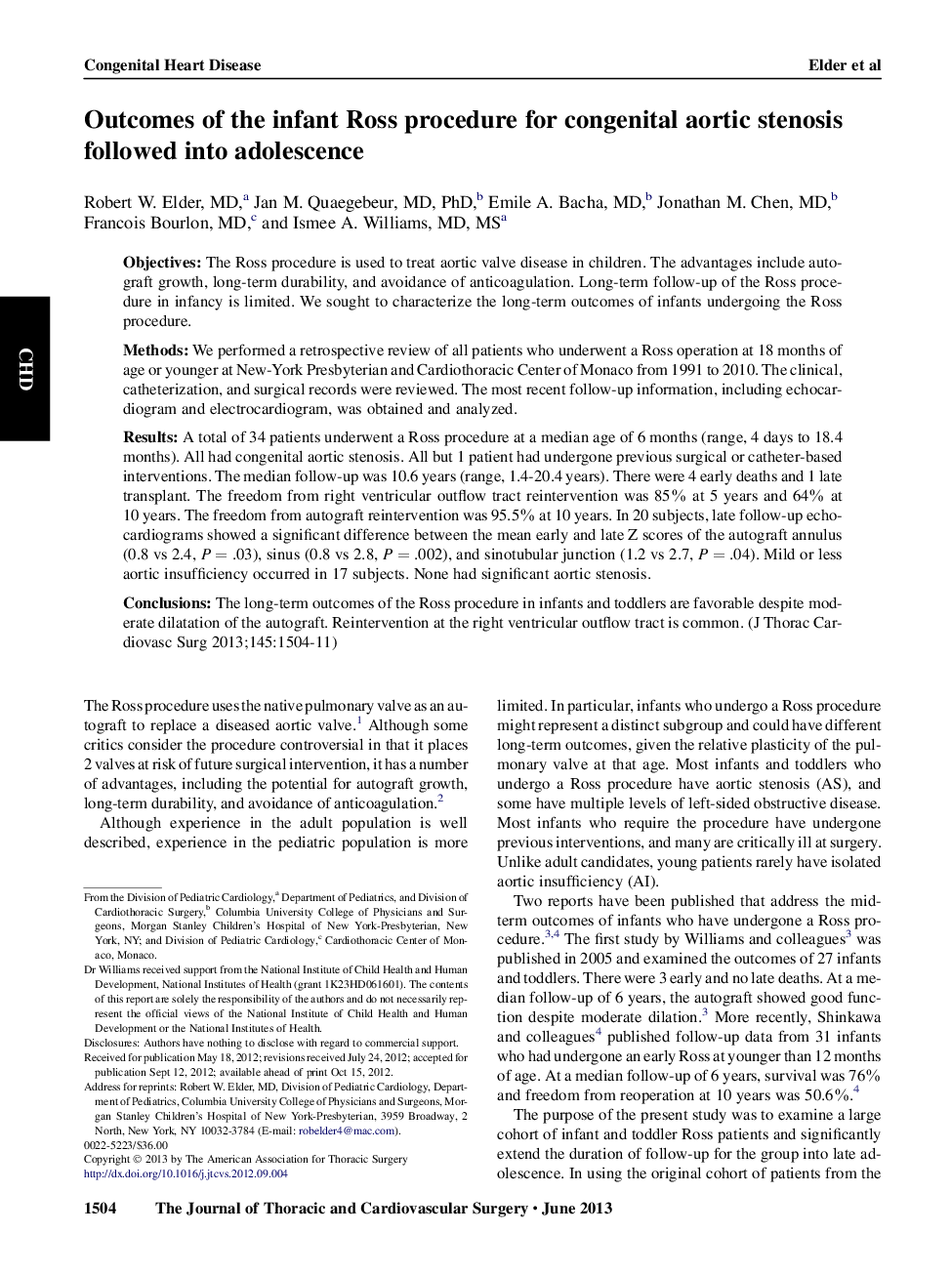| Article ID | Journal | Published Year | Pages | File Type |
|---|---|---|---|---|
| 2981197 | The Journal of Thoracic and Cardiovascular Surgery | 2013 | 8 Pages |
ObjectivesThe Ross procedure is used to treat aortic valve disease in children. The advantages include autograft growth, long-term durability, and avoidance of anticoagulation. Long-term follow-up of the Ross procedure in infancy is limited. We sought to characterize the long-term outcomes of infants undergoing the Ross procedure.MethodsWe performed a retrospective review of all patients who underwent a Ross operation at 18 months of age or younger at New-York Presbyterian and Cardiothoracic Center of Monaco from 1991 to 2010. The clinical, catheterization, and surgical records were reviewed. The most recent follow-up information, including echocardiogram and electrocardiogram, was obtained and analyzed.ResultsA total of 34 patients underwent a Ross procedure at a median age of 6 months (range, 4 days to 18.4 months). All had congenital aortic stenosis. All but 1 patient had undergone previous surgical or catheter-based interventions. The median follow-up was 10.6 years (range, 1.4-20.4 years). There were 4 early deaths and 1 late transplant. The freedom from right ventricular outflow tract reintervention was 85% at 5 years and 64% at 10 years. The freedom from autograft reintervention was 95.5% at 10 years. In 20 subjects, late follow-up echocardiograms showed a significant difference between the mean early and late Z scores of the autograft annulus (0.8 vs 2.4, P = .03), sinus (0.8 vs 2.8, P = .002), and sinotubular junction (1.2 vs 2.7, P = .04). Mild or less aortic insufficiency occurred in 17 subjects. None had significant aortic stenosis.ConclusionsThe long-term outcomes of the Ross procedure in infants and toddlers are favorable despite moderate dilatation of the autograft. Reintervention at the right ventricular outflow tract is common.
